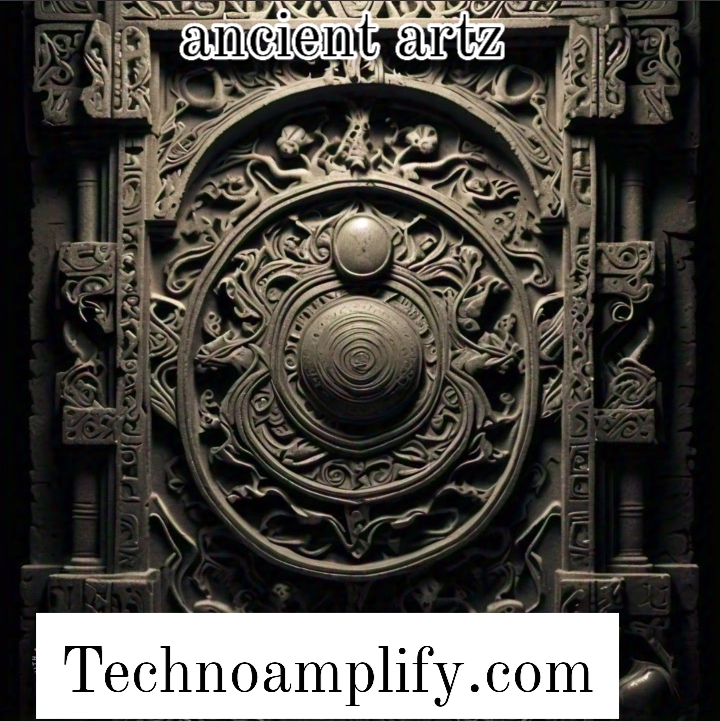Ancient art is a window to the past, offering us a glimpse into the lives, beliefs, and cultures of civilizations that once shaped the world we know today. From intricate ancient artz cave paintings to grand sculptures, these artworks have withstood the test of time, continuing to captivate and inspire us. The evolution of art through the ages reveals the progression of human thought, creativity, and expression, all of which remain relevant in modern times.
In this article, we’ll explore the significance, history, and various forms of ancient art. Along with this, we’ll address frequently asked questions (FAQs) to help you better understand the impact of ancient art on our modern world.
Introduction to Ancient Art
The term “ancient art” refers to the visual expressions, paintings, sculptures, and other forms of artistic work produced by ancient civilizations. These artworks often depict scenes from daily life, religious rituals, mythological stories, and the natural world. The first known forms of art can be traced back to the prehistoric period, with cave paintings in Europe and Africa. Over time, art evolved as civilizations like Mesopotamia, Egypt, Greece, Rome, and India advanced in culture and technology, leaving behind masterpieces that continue to influence contemporary art.
The significance of ancient art extends beyond aesthetics. These works provide valuable insight into the customs, social structures, and philosophical beliefs of past cultures. By studying ancient art, we can understand the human condition in ways that go beyond written history.
Types of Ancient Art Forms
Ancient art spans various forms, each contributing to the cultural fabric of its respective civilization. Let’s explore some of the key art forms that have had a profound influence on art history.
Cave Paintings and Petroglyphs
The earliest form of art, cave paintings, and petroglyphs (rock carvings) date back to the Paleolithic period (about 40,000 years ago). These artworks are primarily found in the caves of Europe, Asia, and Africa. The paintings, often created with natural pigments like ochre, depict animals, human figures, and abstract symbols. The purpose of these paintings is still debated, but many scholars believe they were part of hunting rituals, religious practices, or early forms of communication.
One of the most famous examples of cave art is the Lascaux Caves in France, where hundreds of paintings of horses, deer, and bison cover the cave walls. These ancient artworks are considered masterpieces of early human creativity.
Egyptian Art
Ancient Egyptian art is characterized by its symbolic meaning and highly stylized forms. From 3100 BCE to the fall of the Egyptian Empire in 30 BCE, the Egyptians produced art that was closely linked to religion, the afterlife, and the pharaoh’s divine rule. Egyptian art includes monumental structures like the pyramids and temples, as well as sculptures, paintings, and jewelry.
The depiction of gods and pharaohs in Egyptian art was symbolic rather than realistic. Figures were often shown in a strict profile, with the head and legs in one direction, but the torso facing forward. This style was meant to convey clarity and order, reflecting the Egyptians’ belief in cosmic balance (Ma’at). Some of the most iconic examples of Egyptian art include the tomb paintings in the Valley of the Kings and the famous bust of Queen Nefertiti.
Greek and Roman Art
Greek and Roman art represent the pinnacle of classical civilization and have had an enduring influence on Western art. Greek art is renowned for its development ancient artz of the human figure, emphasizing idealized proportions and beauty. Sculpture, particularly the works of Phidias and Praxiteles, advanced from simple, stylized forms to highly realistic representations of gods and athletes.
Roman art, heavily influenced by Greek styles, focused on realism and portraiture. The Romans excelled in creating realistic busts of their leaders, using marble and bronze to capture the detailed features of their subjects. Roman architecture is equally significant, with innovations like the development of the arch and the construction of large public structures, including the Colosseum and aqueducts.
Mesopotamian Art
Mesopotamian art is known for its contributions to early civilization, especially in the fields of sculpture and bas-relief. This art was closely tied to religion and state power, ancient artz with many works depicting gods, rulers, and mythological creatures. The art of ancient Mesopotamia was primarily produced for temple and palace decoration, with materials such as clay, stone, and ivory used for sculptures and reliefs.
The Ishtar Gate of Babylon is one of the most iconic examples of Mesopotamian art. This grand entrance to the ancient city was adorned with blue-glazed bricks and intricate images of lions, dragons, and other animals associated with the goddess Ishtar.
Indian and Southeast Asian Art
In ancient India, art was deeply influenced by religion, especially Hinduism and Buddhism. Indian art is known for its intricate sculptures and architectural marvels, such as the temples of Khajuraho and the cave temples of Ellora. Hindu art often portrays gods and goddesses in various forms, symbolizing divine power and cosmic order.
Buddhist art, on the other hand, focuses on the life and teachings of Buddha. Early Buddhist art was focused on symbolic representation, such as the use of the wheel of Dharma and the Buddha’s footprints. Over time, it evolved into more realistic depictions of the Buddha, seen in the famous Gandhara sculptures of the first few centuries CE.
The Significance of Ancient Art
Ancient art is not just a collection of beautiful objects; it serves as a record of human history, philosophy, and culture. Here’s why ancient art holds such importance:
Cultural Expression and Identity
Art in ancient civilizations was often used as a means of expressing ancient artz cultural values and identity. It helped communities preserve their beliefs, rituals, and social norms. For instance, the grand temples of the Egyptians and the Romans were not only architectural feats but also symbols of their respective cultures’ devotion to their gods and rulers.
Social and Political Commentary
Ancient art also reflected the political and social dynamics of the ancient artz time. Rulers commissioned art to assert their power and status. Egyptian tombs, for example, often depicted the pharaohs in idealized forms to emphasize their divine authority. Similarly, the realistic portraiture of Roman emperors served to highlight their political power.
Preservation of Knowledge
Art was often a means of preserving knowledge ancient artz for future generations. The Egyptians, for example, used wall paintings to depict scenes of daily life, religious ceremonies, and the afterlife. These works have provided historians and archaeologists with crucial information about the social structures and beliefs of ancient Egypt.
Spiritual and Religious Significance
Religion played a central role in the creation of many ancient artworks. Whether it was the depiction of gods in Greek and Roman art or the detailed frescoes in Christian catacombs, ancient art often served as a way to connect the physical world with the divine. Temples, altars, and sacred spaces were adorned with art to honor deities and facilitate spiritual experiences.
Impact of Ancient Art on Modern Culture
Ancient art continues to shape modern culture in several ways. Many of today’s artistic practices owe their origins to the techniques, styles, and philosophies of ancient ancient artz civilizations. The emphasis on symmetry, proportion, and the human form in ancient Greek sculpture, for instance, still influences contemporary art and design.
In addition, the study of ancient art has led to the development of various art history disciplines, fostering a deeper understanding of aesthetics, symbolism, and cultural exchange. Museums around the world house collections of ancient artifacts, allowing the public to engage with these treasures of human heritage.
Conclusion
Ancient art remains one of humanity’s most valuable legacies, offering us a glimpse into the creative and intellectual achievements of past civilizations. From ancient artz the earliest cave paintings to the monumental structures of the Greeks and Romans, these works transcend time and continue to inform our understanding of history, culture, and identity. By studying ancient art, we not only appreciate the artistic achievements of the past but also learn from the values and philosophies that shaped the world long before us.
As we continue to explore ancient art in all its forms, we are reminded that art is not just about aesthetics; it is a powerful tool for preserving and communicating the essence of human experience across generations.
FAQs About Ancient Art
1. What is the earliest form of ancient art?
The earliest form of ancient art can be found in prehistoric cave paintings, dating back around 40,000 years. These artworks were often created with natural pigments and depict animals and human figures.
2. How did ancient civilizations use art to communicate?
Ancient civilizations used art to communicate their beliefs, social structures, and political power. Art was often symbolic, with figures and scenes representing gods, rulers, and important events.
3. Why was religion so central to ancient art?
Religion played a crucial role in ancient art because it was a means of connecting with the divine, expressing cultural beliefs, and legitimizing political power. Many artworks were created for temples, tombs, and other sacred spaces.
4. What are some famous examples of ancient art?
Some famous examples include the Egyptian pyramids, the Parthenon in Greece, the bust of Nefertiti, the Ishtar Gate of Babylon, and the cave paintings of Lascaux.
5. How does ancient art influence modern culture?
Ancient art has influenced modern culture by shaping aesthetic standards, architectural design, and artistic techniques. It continues to inspire contemporary artists, architects, and designers.


